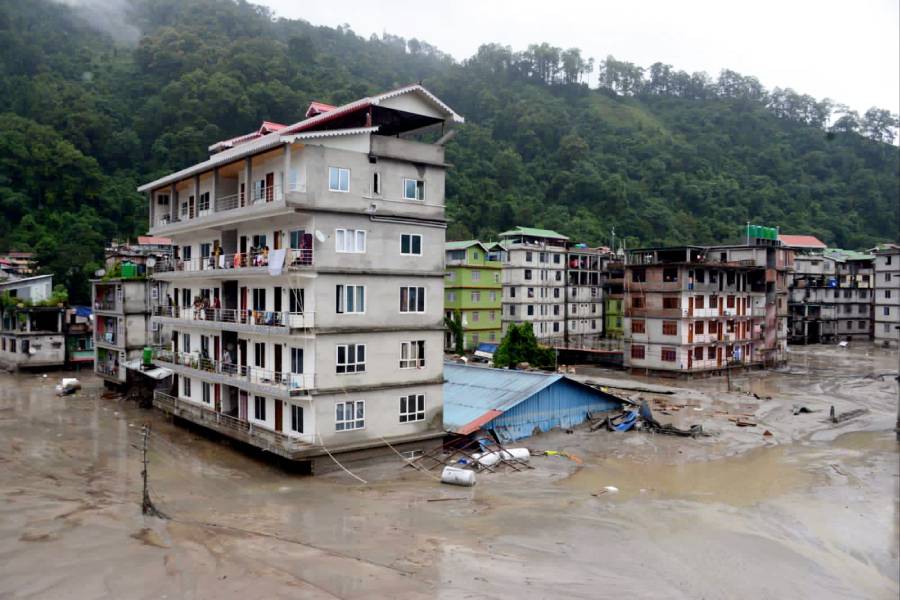The Sikkim government has taken the initiative to provide death certificates to the families of those who went missing during the glacial lake outburst flood (GLOF) that had occurred in the Teesta river on October 4 and swept away people, buildings, bridges and other installations in different areas of the mountain state and affected Kalimpong district in Bengal.
If, after proper inquiry, which the state will conduct before issuing death certificates, it is found that all those missing are dead, the toll will increase to 123 in Sikkim, said sources.
After the natural disaster, the state government, along with various agencies, including the Indian army, launched rescue and relief operations.
Forty-six people died in Sikkim while 77 went missing. In Kalimpong, 14 people lost their lives in the flash flood in the Teesta.
While most of the bodies, which include mortal remains of defence personnel, were identified, some are yet to be identified by their families.
“However, as the bodies were not found in Sikkim, 77 persons were listed in the missing category as per reports of the Sikkim State Disaster Management Authority. As almost two months have passed after the disaster, the initiative has been taken to provide death certificates to the families of these people,” said a source.
On Saturday, Sikkim chief secretary V.B. Pathak confirmed that the exercise had been taken up because relief and benefits to those families were yet to be disbursed as they were yet to come with their claims. “The state will act in the same procedure that was followed in similar disaster-stricken states like Uttarakhand and Himachal Pradesh. A stipulated set of formalities would be followed for registration of deaths of these persons and for issuing death certificates to their families,” he said.
A retired government official pointed out that unless these families have the death certificates, they cannot apply for compensations, insurance claims, other cash benefits and which were associated with the missing person. “That is why the death certificate is important. It is good that the government has taken this initiative,” he said.
Sources in the Sikkim government said if the missing person, who is presumed to be dead, is from Sikkim, there should be an FIR or a missing person report filed by his family or relatives with the police.
“The FIR or the report will be sent to the concerned police station from where the person went missing. The victim’s next of kin will also have to file an affidavit and an inquiry would be conducted by the administration where supporting documents would be checked. A designated officer will then publish a list of persons who are provisionally presumed to be dead in newspapers and government gazettes, seeking claims and objections,” said a source.
If no claim or objection is received within 30 days, the registrar of birth and deaths will make the record and issue the death certificate. Or else, an appeal will lie with the district collector. “If the missing person was a tourist or from other parts of India, an inquiry will also be conducted at his place of residence,” the source added.










